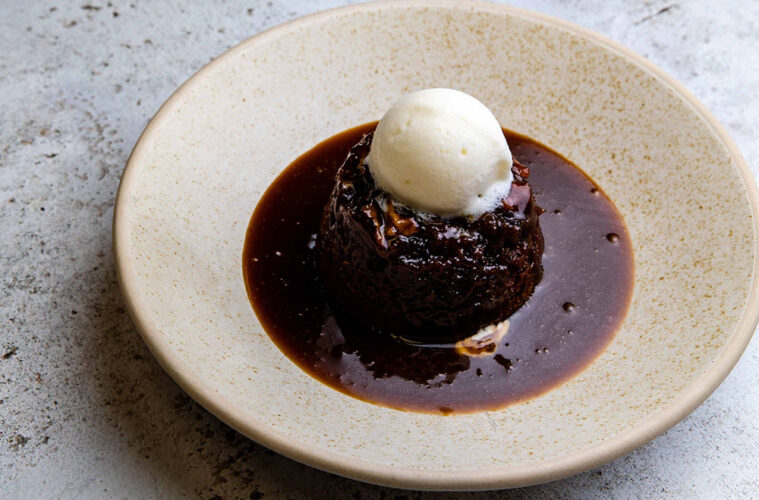Indulging in a comforting, warm dessert after a hearty meal is a culinary experience cherished by people all around the world. Hot puddings, with their rich and comforting flavours, have a special place in the hearts and stomachs of many. From traditional favourites like bread and butter pudding and rice pudding to modern twists like molten lava cakes, hot puddings come in various forms and flavours to cater to a wide range of palates. In this article, we’ll explore the world of popular hot puddings, their history, ingredients, and some delightful recipes.
A Brief History of Hot Puddings:
The history of hot puddings is a fascinating journey through time and culinary evolution. The concept of puddings has been around for centuries, and early puddings were quite different from what we enjoy today. Historically, the term “pudding” was a broad one, encompassing a wide range of dishes that could be sweet or savoury. Puddings were often made using various grains, meats, and fruits, sometimes encased in a pastry or cloth.
In the Middle Ages, puddings were generally a mixture of ingredients, often grains, spices, and meat, all bound together and cooked in a casing. It wasn’t until the 17th century that sweet puddings, like the famous Christmas pudding, gained popularity. These sweet puddings were made with ingredients such as suet, sugar, flour, and dried fruits, and were steamed rather than baked.
As time passed and culinary techniques evolved, hot puddings became more diverse and accessible to people from all walks of life. The Industrial Revolution brought about innovations in cooking and kitchen equipment, making the preparation of hot puddings more convenient and affordable. The 19th and 20th centuries saw the emergence of classic hot puddings like sticky toffee pudding, bread and butter pudding, and rice pudding.
Ingredients That Make Hot Puddings Irresistible:
The beauty of hot puddings lies in their simplicity. Many hot puddings share a few common ingredients, each contributing to the delightful and comforting nature of the dessert.
1. Starchy Base: Many hot puddings use a starchy base like bread, rice, or pastry. This starchy element provides the necessary structure and texture to the pudding.
2. Sweeteners: Sugar, honey, or maple syrup are used to sweeten the pudding. The choice of sweetener can vary depending on the pudding’s tradition and regional influences.
3. Dairy: Milk or cream is often used to create a rich and creamy texture. In some recipes, you may also find ingredients like custard or condensed milk.
4. Flavourings: Ingredients such as vanilla, cinnamon, nutmeg, and citrus zest are added for flavour. These aromatic additions give hot puddings their distinct taste and fragrance.
5. Eggs: Eggs serve as binders and add richness to hot puddings. They also contribute to the pudding’s texture and consistency.
6. Fruit and Nuts: Many hot puddings are enriched with dried fruits like raisins, sultanas, currants, or fresh fruits like apples, pears, and bananas. Nuts such as almonds or pecans are often included for extra crunch and flavour.
7. Butter: Butter is an essential ingredient, adding richness and moisture to the pudding.
Popular Hot Puddings Around the World:
Hot puddings are enjoyed in various forms and under different names across the globe. Here are some beloved hot puddings from different regions:
1. Sticky Toffee Pudding (United Kingdom): This moist, date-infused sponge cake is drenched in a luscious toffee sauce and is a quintessential British favourite.
2. Tiramisu (Italy): This classic Italian dessert layers coffee-soaked ladyfingers and mascarpone cheese, often served warm or at room temperature.
3. Rice Pudding (Global): A comforting dessert made from rice, milk, sugar, and a hint of vanilla, served warm or cold, and enjoyed in various forms worldwide.
4. Bread and Butter Pudding (United Kingdom): Slices of buttered bread are layered with raisins and custard, then baked until golden and bubbling.
5. Malva Pudding (South Africa): A sweet, sticky dessert made with apricot jam, served warm with a generous drizzle of creamy custard or ice cream.
6. Molten Lava Cake (Worldwide): A modern classic, this individual-sized chocolate cake has a gooey, liquid centre that oozes out when cut.
7. Arroz con Leche (Latin America): A creamy rice pudding infused with flavours of cinnamon and sometimes topped with a sprinkle of ground cinnamon or a drizzle of caramel.
8. Sago Pudding (Southeast Asia): A simple yet delightful dessert made from sago pearls, sugar, and coconut milk, often served warm and garnished with fresh fruits.
Delightful Hot Pudding Recipes:
1. Sticky Toffee Pudding:
– Ingredients: Dates, brown sugar, butter, eggs, flour, baking soda, vanilla, toffee sauce.
– Method: Soak dates, mix batter, and bake. Serve with warm toffee sauce.
2. Classic Rice Pudding:
– Ingredients: Rice, milk, sugar, vanilla, nutmeg.
– Method: Simmer rice in sweetened milk, add flavourings, and serve warm or chilled.
3. Bread and Butter Pudding:
– Ingredients: Bread, butter, eggs, milk, sugar, raisins, nutmeg.
– Method: Layer bread, butter, and raisins, pour over egg mixture, and bake until golden.
4. Molten Lava Cake:
– Ingredients: Chocolate, butter, sugar, eggs, flour, cocoa powder.
– Method: Melt chocolate and butter, whisk with other ingredients, bake, and serve warm.
5. Arroz con Leche:
– Ingredients: Rice, milk, sugar, cinnamon, raisins.
– Method: Simmer rice in sweetened milk with cinnamon and raisins until creamy.
Hot pudding recipes offer a delightful escape from the daily routine, providing comfort and warmth with every bite. Whether you’re a fan of traditional favourites or enjoy experimenting with modern twists, there’s a hot pudding to satisfy your sweet tooth and warm your heart. So, the next time you’re craving a soothing dessert, consider indulging in a piping hot pudding for a truly comforting experience that transcends borders and time.



